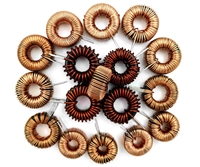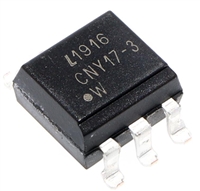| 是否无铅: | 不含铅 | 是否Rohs认证: | 符合 |
| 生命周期: | Active | 零件包装代码: | SSOP |
| 包装说明: | SSOP, | 针数: | 16 |
| Reach Compliance Code: | unknown | 风险等级: | 5.57 |
| 模拟集成电路 - 其他类型: | ANALOG CIRCUIT | JESD-30 代码: | R-PDSO-G16 |
| JESD-609代码: | e3 | 长度: | 6.2 mm |
| 湿度敏感等级: | 1 | 功能数量: | 1 |
| 端子数量: | 16 | 最高工作温度: | 125 °C |
| 最低工作温度: | -40 °C | 封装主体材料: | PLASTIC/EPOXY |
| 封装代码: | SSOP | 封装形状: | RECTANGULAR |
| 封装形式: | SMALL OUTLINE, SHRINK PITCH | 峰值回流温度(摄氏度): | 260 |
| 座面最大高度: | 2 mm | 最大供电电压 (Vsup): | 5.5 V |
| 最小供电电压 (Vsup): | 2.7 V | 标称供电电压 (Vsup): | 3.3 V |
| 表面贴装: | YES | 温度等级: | AUTOMOTIVE |
| 端子面层: | MATTE TIN | 端子形式: | GULL WING |
| 端子节距: | 0.65 mm | 端子位置: | DUAL |
| 处于峰值回流温度下的最长时间: | 40 | 宽度: | 5.3 mm |
| Base Number Matches: | 1 |
| 型号 | 品牌 | 获取价格 | 描述 | 数据表 |
| AD5933BRSZ-U1 | ADI |
获取价格 |
IC SPECIALTY ANALOG CIRCUIT, PDSO16, LEAD FREE, MO-150AC, SSOP-16, Analog IC:Other |

|
| AD5933WYRSZ-REEL7 | ADI |
获取价格 |
1 MSPS, 12-Bit Impedance Converter, Network Analyzer |

|
| AD5933YRSZ | ADI |
获取价格 |
1 MSPS, 12-Bit Impedance Converter, Network Analyzer |

|
| AD5933YRSZ-REEL7 | ADI |
获取价格 |
1 MSPS, 12-Bit Impedance Converter, Network Analyzer |

|
| AD5934 | ADI |
获取价格 |
250 kSPS, 12-Bit Impedance Converter, Network Analyzer |

|
| AD5934BRSZ-U1 | ADI |
获取价格 |
IC SPECIALTY ANALOG CIRCUIT, PDSO16, LEAD FREE, MO-150AC, SSOP-16, Analog IC:Other |

|
| AD5934YRSZ | ADI |
获取价格 |
250 kSPS, 12-Bit Impedance Converter, Network Analyzer |

|
| AD5934YRSZ-REEL7 | ADI |
获取价格 |
250 kSPS, 12-Bit Impedance Converter, Network Analyzer |

|
| AD594 | ADI |
获取价格 |
Monolithic Thermocouple Amplifiers with Cold Junction Compensation |

|
| AD594/AD595 | ADI |
获取价格 |
Monolithic Thermocouple Amplifiers with Cold Junction Compensation |

|
 压敏电阻器在直流电路中的过压保护应用探讨
压敏电阻器在直流电路中的过压保护应用探讨

 电感耐压值及其与电感大小的关系
电感耐压值及其与电感大小的关系

 CNY17F光耦合器:特性、应用、封装、引脚功能及替换型号解析
CNY17F光耦合器:特性、应用、封装、引脚功能及替换型号解析

 DS1307资料解析:特性、引脚说明、替代推荐
DS1307资料解析:特性、引脚说明、替代推荐
